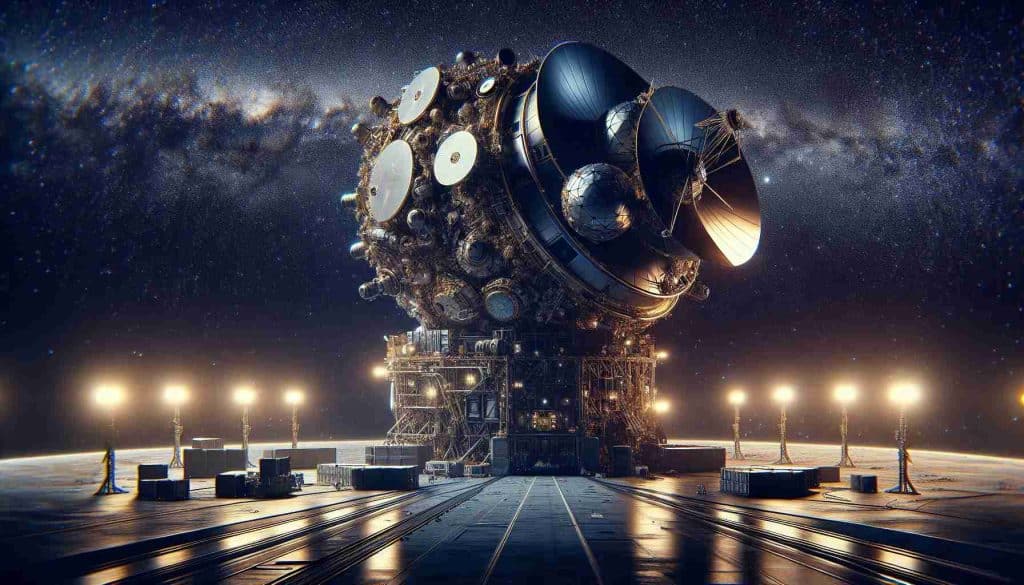SPHEREx: A New Era in Cosmic Exploration

A groundbreaking space telescope is set to launch next month, promising to map the cosmos in unprecedented detail. The SPHEREx mission, officially known as the Spectro-Photometer for the History of the Universe, Epoch of Reionization and Ices Explorer, aims to provide scientists with a comprehensive map of the sky using infrared light. This innovative approach will allow researchers to analyze the composition and distances of millions of galaxies and stars. The mission is expected to last two years and will collect data on more than 450 million galaxies and over 100 million stars within our Milky Way galaxy. Key questions about the universe’s early moments, galaxy formation, and the presence of water in planetary systems will be explored. Currently, the spacecraft is undergoing final preparations for its scheduled launch from Vandenberg Space Force Base in California aboard a SpaceX Falcon 9 rocket on February 27.
Mission Objectives and Scientific Impact
The SPHEREx mission is designed to survey the entire sky in 102 wavelengths of infrared light. This capability will provide valuable insights into the universe’s earliest stages. According to NASA, the mission will help researchers examine conditions just after the Big Bang. It will track the evolution of galaxies over time. The data collected will also contribute to understanding how essential elements, like water, formed in planetary systems. This knowledge is crucial for understanding the potential for life beyond Earth.
By mapping the cosmos in infrared light, SPHEREx will reveal hidden details that are not visible in other wavelengths. This will allow scientists to study the formation of stars and galaxies in greater detail than ever before. The mission aims to answer fundamental questions about the universe’s history and its structure. The insights gained from SPHEREx could reshape our understanding of cosmic evolution and the processes that govern it. Researchers are eager to see how this mission will enhance our knowledge of the universe and its origins.
Testing and Preparations for Launch
Extensive testing of the SPHEREx spacecraft has been conducted at BAE Systems in Boulder, Colorado. The observatory has been placed in the Titan thermal vacuum chamber to simulate the extreme temperatures it will experience in orbit. These tests are critical for ensuring the telescope’s performance in space. Farah Alibay, a systems engineer at the Jet Propulsion Laboratory, emphasized the importance of these preparations. She stated that rigorous testing helps to identify any potential issues before launch.
The testing process involves various simulations and assessments to ensure that all systems function correctly. Engineers have meticulously examined every component of the spacecraft. They have tested the scientific instruments, communication systems, and power sources. This thorough approach is essential for the mission’s success. The team is confident that the extensive preparations will lead to a smooth launch and operational phase. As the launch date approaches, excitement builds within the scientific community. Researchers are eager to see the results of SPHEREx’s groundbreaking mission.
Design and Structure
The SPHEREx spacecraft comprises two primary sections: the scientific instruments and the support systems. At its core, a telescope developed by BAE Systems forms the heart of its scientific equipment. This telescope is designed to capture high-quality images and data across a wide range of infrared wavelengths. The spacecraft section houses the onboard computer, communication systems, and solar arrays that provide power.
To protect the telescope from excess heat, three metallic photon shields are arranged in concentric cones. These shields regulate temperature and ensure optimal performance. The design of SPHEREx reflects a careful balance between advanced technology and practical engineering. Each component has been meticulously crafted to meet the mission’s scientific goals. The structure of the spacecraft is robust yet lightweight, allowing it to withstand the rigors of space travel. This thoughtful design will enable SPHEREx to operate effectively in the harsh environment of space.
Looking Ahead
As the launch date approaches, optimism surrounds the SPHEREx mission. Brian Pramann, the program manager for the project, expressed excitement about the potential impact of the data collected. He stated that the information gathered could transform the scientific community’s understanding of cosmic history. The first images captured by SPHEREx are expected to provide significant insights into the universe’s past.
Researchers anticipate that these images will offer a glimpse of celestial objects as they appeared billions of years ago. This could lead to groundbreaking discoveries about the formation and evolution of galaxies and stars. The mission’s findings may also shed light on the presence of water and other essential elements in planetary systems. As scientists prepare for the launch, they remain hopeful that SPHEREx will unlock new mysteries of the universe and deepen our understanding of its origins.
Observer Voice is the one stop site for National, International news, Sports, Editor’s Choice, Art/culture contents, Quotes and much more. We also cover historical contents. Historical contents includes World History, Indian History, and what happened today. The website also covers Entertainment across the India and World.
Follow Us on Twitter, Instagram, Facebook, & LinkedIn

